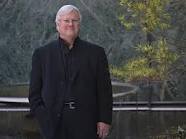Reach for the sky
Cerulli report: Australian fund management and Asia
1 April, 2012
Diving the Titanic
10 April, 2012Discovery Channel Magazine, April 2012
In 1987 a young architecture student called Timothy Johnson, an undergraduate at the University of Minnesota, visited Chicago for the first time. He was overwhelmed by the mighty skyscrapers that rose, muscular, from the city floor – the Sears Tower, the John Hancock Center – and was both delighted and deflated. On his way back to the Midwest farmland where the tallest buildings were grain silos and water towers, “I was quite depressed, thinking I was born a hundred years too late,” he recalls. “Wouldn’t it have been great to be in a city like Chicago at the turn of the century, when it was all being built – when the US itself was being built?”
Then he went to Asia. “And then I realized: no, I was born at exactly the right time.”
Johnson went on to become a design partner for NBBJ, designing buildings including the Sail on Singapore’s Marina Bay, one of the tallest residential towers in the world, and he became chairman of the Council on Tall Buildings and Urban Habitat, the leading source of information on supertall towers.
A glance at the council’s data tells us that we are, without question, amid a golden age of skyscraper design and construction every bit as dramatic as 1930s New York, when the Chrysler and Empire State buildings created the world’s most iconic skyline, and the 1970s, when the World Trade Centre and Sears Tower (now the Willis Tower) traded world records. In 2011 alone, 88 buildings higher than 200 metres were completed, including 17 new additions to the 100 tallest in the world. In 2010 Dubai’s Burj Khalifa shattered the world record for tall buildings by 300 metres; it’s more than twice the height of the Empire State. And plans are well advanced for a building that will reach one kilometre into the sky.
Folly or function? The jury is out. All architects will make a strong practical case for going tall, but there’s no question that we do so too because it fires the imagination. “A super tall tower represents a meaningful step forward and a symbol of success and optimism for the future,” says Adrian Smith, the man who designed both Burj Khalifa and the tower that will take its record, the Kingdom Tower in Jeddah, Saudi Arabia. (A busy man, he’s also responsible for Shanghai’s Jin Mao Tower.) “We must always strive for greatness and find the means to attain it. If not, we will become irrelevant.
“If cities don’t continue to build and improve their conditions, they will die,” he says. “When we lose the spirit to reach for glory, we lose our soul.”
To read the rest of this article, contact me or Discovery Channel Magazine
